Don't wanna be here? Send us removal request.
Text
Common Challenges in 3D Commercial Rendering and How to Overcome Them
In the world of visual marketing, 3D commercial rendering has become a powerful tool for businesses to showcase their products and services with stunning realism. However, like any complex process, 3D commercial rendering comes with its own set of challenges. In this blog, we'll explore some of the most common obstacles faced in 3D commercial rendering and provide practical solutions to overcome them.
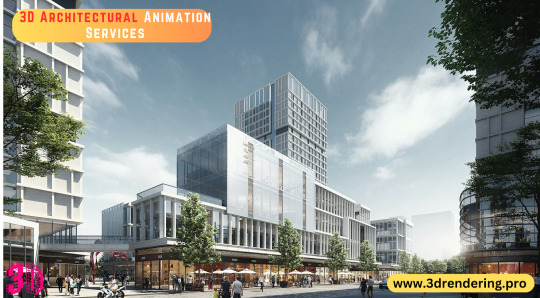
Managing Complex Scenes
Challenge: As 3D commercial renders become more detailed, managing complex scenes with numerous elements can be overwhelming. This can lead to increased rendering times and potential system crashes.
Solution:
Optimization: Use techniques such as level of detail (LOD), which reduces the complexity of distant objects in the scene.
Efficient Workflow: Break down the scene into smaller, manageable parts and render them separately before compositing them together.
Powerful Hardware: Invest in high-performance hardware and leverage cloud rendering services to handle complex scenes efficiently.
Achieving Realistic Textures and Materials
Challenge: Creating realistic textures and materials is crucial for producing believable 3D commercial renders. However, achieving the perfect look can be time-consuming and requires a high level of skill.
Solution:
High-Quality Assets: Utilize high-quality texture libraries and material assets to save time and ensure realism.
PBR Workflow: Implement Physically Based Rendering (PBR) techniques, which simulate the way light interacts with surfaces for more accurate results.
Practice and Experimentation: Continuously practice and experiment with different settings and materials to improve your skills and discover new techniques.
Balancing Render Quality and Time
Challenge: High-quality 3D commercial rendering can be time-intensive, which may not be practical for tight deadlines or limited budgets.
Solution:
Render Settings: Adjust render settings to find a balance between quality and speed. Lower settings for drafts and higher settings for final renders.
Denoising: Use denoising tools to reduce noise in renders, allowing for lower sample rates and faster rendering without compromising quality.
Progressive Rendering: Implement progressive rendering techniques that allow you to see a draft version of the render quickly, helping to make decisions faster.
Handling Large File Sizes
Challenge: 3D commercial rendering projects often result in large file sizes, which can be difficult to manage, share, and store.
Solution:
Compression: Use file compression techniques to reduce the size of textures, models, and final renders without losing quality.
Efficient File Management: Organize your files systematically and use version control to keep track of changes and backups.
Cloud Storage: Utilize cloud storage solutions to store and share large files easily, ensuring accessibility and collaboration.
Lighting and Shadows
Challenge: Proper lighting and shadowing are essential for creating realistic 3D commercial renders, but getting them right can be tricky.
Solution:
Lighting Techniques: Use a combination of different lighting techniques such as global illumination, HDRI lighting, and area lights to achieve realistic results.
Reference Images: Study reference images and real-world lighting scenarios to understand how light interacts with objects and apply these observations to your renders.
Lighting Tools: Leverage advanced lighting tools and plugins available in your 3D software to fine-tune lighting and shadows.
Post-Processing
Challenge: Even with the best rendering techniques, the raw output may require post-processing to achieve the desired final look.
Solution:
Post-Processing Software: Use software like Adobe Photoshop, After Effects, or specialized compositing tools to enhance your renders.
Color Grading: Apply color grading to improve the visual appeal and consistency of your renders.
Effects and Adjustments: Add effects such as depth of field, motion blur, and lens flares to enhance realism and visual impact.
Conclusion
3D commercial rendering is a complex and challenging process, but with the right strategies and tools, you can overcome these obstacles and produce stunning, realistic visuals. By optimizing scenes, using high-quality textures, balancing render settings, managing file sizes, mastering lighting, and applying post-processing techniques, you can enhance the quality and efficiency of your 3D commercial rendering projects.
#3d commercial renders#commercial rendering#3d commercial rendering#commercial 3d rendering services
0 notes
Text
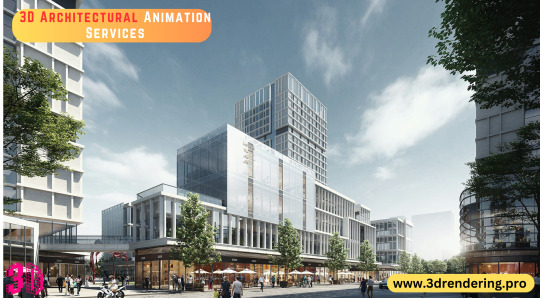
#commercial architecture animations#3d animation architecture design#3d architecture animation#architecture animation#animation architecture#3d architectural animation services#3d animation architecture
0 notes
Text
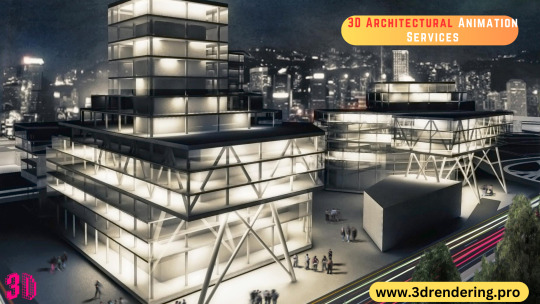
Are you looking to enhance your visual marketing efforts? Discover how 3D commercial rendering can help showcase your products and services with stunning realism. In our latest blog, we explore common challenges in 3D rendering and provide practical solutions to overcome them. Learn how to optimize scenes, use high-quality textures, balance render settings, manage file sizes, master lighting, and apply post-processing techniques to elevate the quality and efficiency of your projects. Join us in mastering the art of 3D commercial rendering!
Visit Now: https://www.3drendering.pro/3d-commercial/
#3d commercial renders#commercial rendering#3d commercial rendering#commercial 3d rendering services
0 notes
Text
Are you in need of 3D architectural animation services for your next project? Choosing the right provider is crucial for bringing your designs to life and captivating stakeholders. With so many options available, it can be challenging to make the best choice. Consider factors such as portfolio, experience, client feedback, technology, creative process, communication skills, customization options, pricing, and turnaround time to ensure you make an informed decision. High-quality animations can significantly enhance your project's presentation and make it more compelling for stakeholders. Investing time and effort in selecting the right provider will pay off in the form of stunning, realistic animations that exceed your expectations. Whether it's a commercial building, residential project, or urban development, the right partner can make all the difference in achieving your goals.
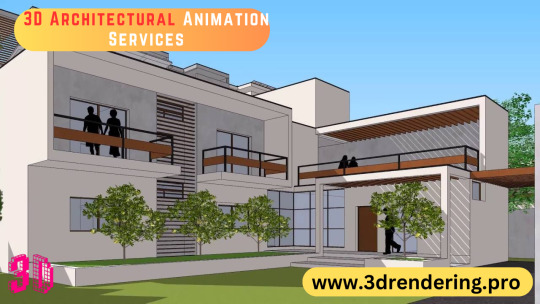
#commercial architecture animations#3d animation architecture design#3d architecture animation#architecture animation#animation architecture#3d architectural animation services#3d animation architecture
0 notes
Text
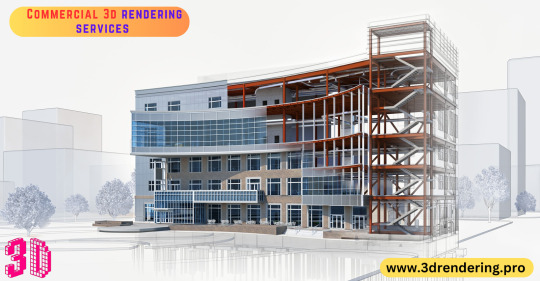
As we enter 2024, the commercial 3D rendering industry is rapidly evolving. Businesses are increasingly utilizing advanced 3D renders to boost their marketing efforts, engage customers, and stay competitive. Let's explore the latest trends in commercial 3D rendering services that will have a significant impact this year.
The commercial 3D rendering landscape is constantly changing, driven by technology and consumer preferences. In 2024, businesses that adopt these trends will be able to create captivating visuals that resonate with their target audience. Whether it's AI-powered rendering, photorealistic images, VR/AR integration, customization, sustainability, cloud solutions, or collaboration tools, the future of 3D rendering is promising.
By staying informed about these trends, businesses can maximize the potential of 3D renders to enhance their marketing strategies, engage customers, and achieve their objectives. Let's embrace the possibilities that commercial 3D rendering offers in the year ahead.
#3d commercial renders#commercial rendering#3d commercial rendering#commercial 3d rendering services
0 notes
Text
How to Choose the Right 3D Architectural Animation Services for Your Project
In today's competitive market, 3D architectural animation services have become essential for architects, real estate developers, and designers. These services bring designs to life, allowing stakeholders to visualize projects before they are built. However, with so many options available, choosing the right 3D architectural animation services for your project can be challenging. Here are some key factors to consider to ensure you make the best choice.
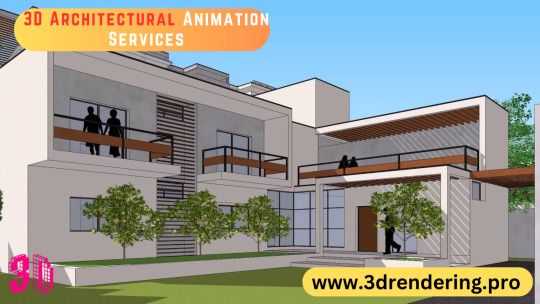
1. Assess Their Portfolio
Before selecting a service provider, review their portfolio of past projects. A strong portfolio will showcase a variety of commercial architecture animations and 3D animation architecture designs. Look for projects similar to yours to gauge their expertise and style. Pay attention to the quality of their 3D architecture animations, the level of detail, and the overall realism.
2. Evaluate Their Experience
Experience is crucial in the field of 3D architectural animation. Companies with a proven track record are more likely to deliver high-quality results. Consider how long the provider has been in business and their experience with projects of similar scale and complexity. Experienced providers are also better equipped to handle unexpected challenges that may arise during the animation process.
3. Check Client Testimonials and Reviews
Client testimonials and reviews can provide valuable insights into the reliability and quality of a 3D architectural animation service. Look for reviews on their website, social media, and third-party review platforms. Positive feedback from satisfied clients indicates a provider's ability to meet expectations and deliver excellent animation architecture.
4. Consider Their Technology and Tools
The quality of 3D architecture animation depends heavily on the technology and tools used. Ensure the service provider uses the latest software and hardware to create their animations. Advanced technology enables more detailed and realistic animations, enhancing the overall impact of your project. Ask about their rendering capabilities and any special techniques they employ.
5. Evaluate Their Creative Process
Understanding the provider’s creative process can help you determine if they are the right fit for your project. A good 3D architectural animation service will have a structured process that includes initial consultations, concept development, storyboard creation, and regular progress updates. This ensures that your vision is accurately captured and translated into the final animation.
6. Assess Their Communication Skills
Effective communication is essential for a successful collaboration. Choose a service provider who is responsive and open to your ideas and feedback. They should be willing to listen to your requirements and provide clear explanations of their approach. Regular communication throughout the project will ensure that any issues are promptly addressed and that the final product meets your expectations.
7. Consider Customization Options
Every architectural project is unique, and your 3D animation should reflect that. Look for a provider who offers customization options tailored to your specific needs. This includes the ability to incorporate specific design elements, adjust animations based on feedback, and create unique visualizations that stand out.
8. Review Their Pricing Structure
While cost should not be the sole deciding factor, it is important to choose a provider whose pricing fits within your budget. Request detailed quotes from multiple providers to compare their pricing structures. Be wary of services that are significantly cheaper than others, as this may indicate lower quality. Look for a balance between cost and quality to ensure you get the best value for your investment.
9. Evaluate Their Turnaround Time
Timeliness is crucial in the architectural industry, where project deadlines are often tight. Discuss the estimated turnaround time for your 3D animation project with potential providers. Ensure they can deliver within your required timeframe without compromising on quality. A reliable provider will offer realistic deadlines and adhere to them.
Conclusion
Choosing the right 3D architectural animation services for your project involves careful consideration of several factors. By assessing their portfolio, experience, client feedback, technology, creative process, communication skills, customization options, pricing, and turnaround time, you can make an informed decision that ensures your project’s success. High-quality commercial architecture animations and 3D animation architecture designs can significantly enhance your project's presentation, making it more compelling and impactful for stakeholders.
Investing time and effort in selecting the right provider will pay off in the form of stunning, realistic animations that bring your architectural visions to life. Whether you need 3D architectural animation services for a commercial building, residential project, or urban development, the right partner can make all the difference in achieving your goals and exceeding your expectations.
#commercial architecture animations#3d animation architecture design#3d architecture animation#architecture animation#animation architecture#3d architectural animation services#3d animation architecture
0 notes
Text
Innovative Trends in Commercial 3D Rendering Services for 2024
As we step into 2024, the field of commercial 3D rendering continues to evolve at a rapid pace. Businesses are increasingly leveraging advanced 3D commercial renders to enhance their marketing strategies, improve customer engagement, and stay ahead in the competitive market. Let's delve into some of the innovative trends in commercial 3D rendering services that are set to make a significant impact this year.
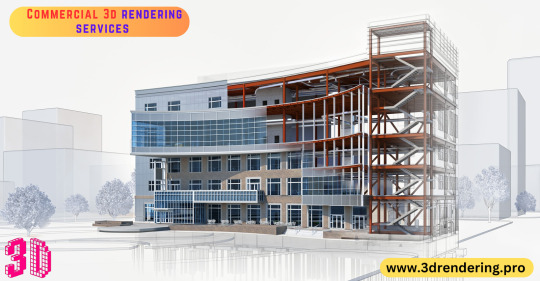
1. AI-Powered Rendering
Artificial Intelligence (AI) is revolutionizing many industries, and commercial rendering is no exception. AI-powered tools and algorithms are making the rendering process faster and more efficient. These advancements allow for real-time 3D commercial rendering, enabling businesses to make instant adjustments and see immediate results. This not only saves time but also ensures a higher level of precision and quality in the final renders.
2. Photorealistic Renders
The demand for photorealistic 3D commercial renders is on the rise. Businesses want their digital representations to be indistinguishable from real-life images. This trend is particularly prevalent in industries such as real estate, automotive, and retail, where high-quality visuals can significantly influence purchasing decisions. Advanced rendering techniques, coupled with powerful graphics hardware, are enabling the creation of ultra-realistic images that captivate and engage audiences.
3. Virtual and Augmented Reality Integration
Virtual Reality (VR) and Augmented Reality (AR) are becoming integral components of commercial 3D rendering services. These technologies provide immersive experiences that allow customers to interact with products in a virtual environment. For example, real estate companies are using VR to offer virtual tours of properties, while retailers are employing AR to let customers visualize how products will look in their homes. This interactive approach enhances customer engagement and provides a unique selling proposition.
4. Customization and Personalization
In 2024, customization and personalization are key trends in commercial 3D rendering. Businesses are recognizing the value of offering tailored experiences to their customers. 3D commercial rendering services now often include options for customization, allowing customers to modify products according to their preferences. This trend is particularly prominent in the e-commerce sector, where personalized 3D renders can significantly boost sales by offering customers a more engaging and relevant shopping experience.
5. Sustainable Rendering Practices
As environmental concerns continue to grow, sustainable practices in 3D commercial rendering are gaining traction. Companies are increasingly adopting energy-efficient rendering techniques and using eco-friendly resources. This not only reduces the carbon footprint but also appeals to environmentally conscious consumers. Sustainable rendering practices are becoming a differentiator in the market, with businesses promoting their commitment to green initiatives.
6. Cloud-Based Rendering Solutions
The shift towards cloud-based rendering solutions is another notable trend. Cloud rendering offers numerous advantages, including scalability, cost-effectiveness, and accessibility. Businesses can leverage the power of the cloud to handle complex rendering tasks without the need for expensive hardware investments. This democratizes access to high-quality 3D commercial rendering services, making them available to a wider range of businesses, from startups to large enterprises.
7. Enhanced Collaboration Tools
Collaboration is crucial in the rendering process, and new tools are making it easier for teams to work together seamlessly. Enhanced collaboration platforms allow multiple stakeholders to review, comment, and make changes to 3D commercial renders in real-time. This streamlines the workflow, reduces the chances of errors, and ensures that the final product meets all requirements. These tools are particularly beneficial in industries such as architecture, where collaboration between designers, clients, and contractors is essential.
Conclusion
The landscape of commercial 3D rendering services is continually evolving, driven by technological advancements and changing consumer preferences. As we move through 2024, businesses that embrace these innovative trends will be well-positioned to create compelling visuals that engage and convert their target audiences. Whether through AI-powered rendering, photorealistic images, VR/AR integration, customization, sustainable practices, cloud solutions, or enhanced collaboration tools, the future of 3D commercial rendering is bright and full of possibilities.
By staying ahead of these trends, businesses can leverage the full potential of 3D commercial renders to enhance their marketing strategies, drive customer engagement, and achieve their business goals.
#3d commercial renders#commercial rendering#3d commercial rendering#commercial 3d rendering services
0 notes
Text
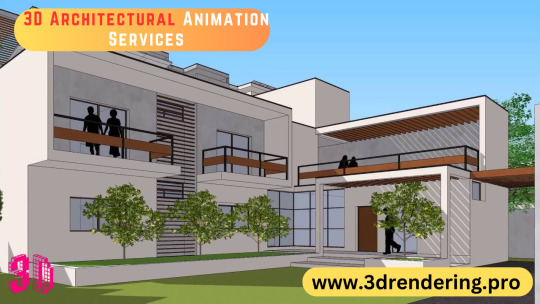
#commercial architecture animations#3d animation architecture design#3d architecture animation#architecture animation#animation architecture#3d architectural animation services#3d animation architecture
0 notes
Text
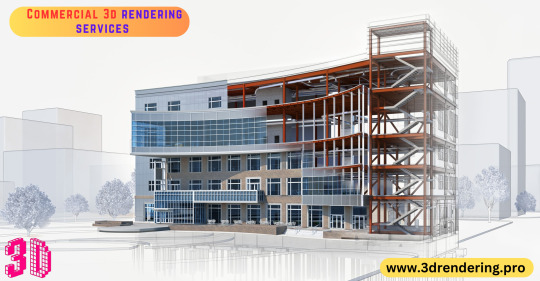
#3d commercial renders#commercial rendering#3d commercial rendering#commercial 3d rendering services
0 notes
Text
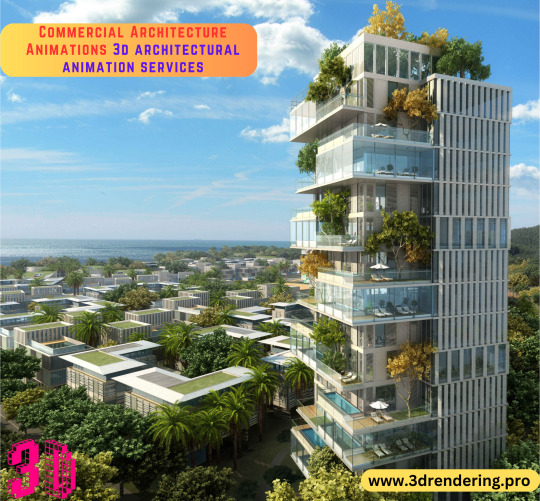
Are you looking to create stunning 3D architectural animations that will set you apart in the industry? This step-by-step guide will walk you through the essential stages of producing captivating animations, whether you're working on commercial architecture projects or residential designs. By mastering the art of 3D architecture animation, you can enhance client presentations, market real estate, and bring your projects to life. Partnering with professional 3D architectural animation services can help you achieve even higher levels of detail and realism. Embrace the power of animation architecture and elevate your architectural presentations to new heights.
#commercial architecture animations#3d animation architecture design#3d architecture animation#architecture animation#animation architecture#3d architectural animation services#3d animation architecture
0 notes
Text
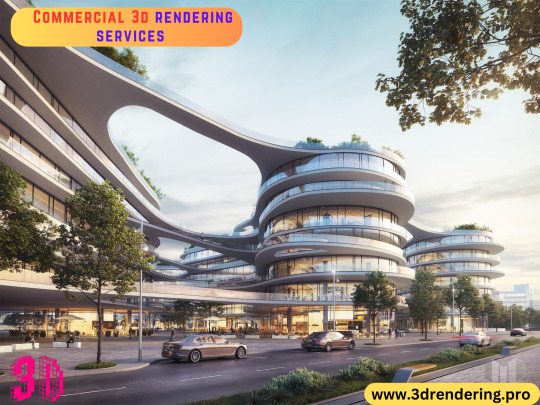
In today's competitive business environment, standing out is crucial. Enhance your marketing strategy with 3D commercial rendering technology. Visualize your projects in a dynamic and engaging way to impress potential clients and stakeholders. Integrating 3D commercial rendering into your marketing strategy offers numerous benefits, from enhanced visualization to improved client engagement and boosted marketing campaigns. Embrace this technology to drive better results for your business and gain a competitive edge in the market.
#3d commercial renders#commercial rendering#3d commercial rendering#commercial 3d rendering services
0 notes
Text
Guide to Creating 3D Architectural Animations
Creating stunning 3D architectural animations involves a combination of creativity, technical skills, and a deep understanding of architectural design. Whether you're aiming to enhance client presentations, market real estate, or bring a commercial project to life, mastering the art of 3D architecture animation can set you apart in the industry. This step-by-step guide will walk you through the essential stages of producing captivating 3D architectural animations, with a focus on keywords such as commercial architecture animations, 3d animation architecture design, 3d architecture animation, architecture animation, animation architecture, 3d architectural animation services, and 3d animation architecture.
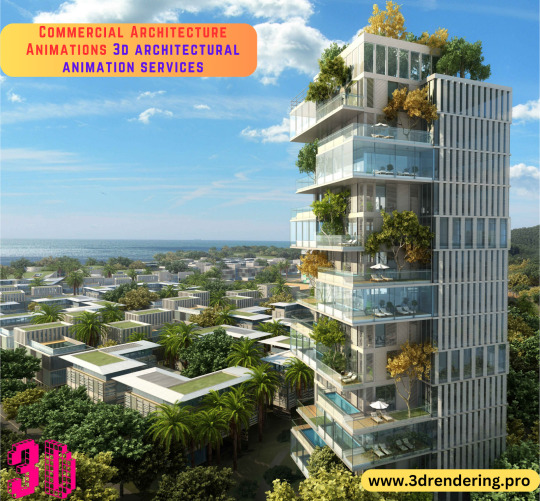
Step 1: Understand the Project Requirements
Before diving into the animation process, it’s crucial to have a clear understanding of the project requirements. This involves:
Client Briefing: Discuss with the client to understand their vision, objectives, and expectations.
Project Scope: Determine the scope of the project, including the level of detail, the type of animation (e.g., walkthroughs, flyovers, or static views), and the target audience.
Gathering References: Collect references, such as architectural drawings, sketches, mood boards, and any existing 3D models.
Understanding these aspects will ensure that your animation aligns with the client’s vision and serves its intended purpose effectively.
Step 2: Conceptualize and Plan the Animation
With a clear understanding of the project, the next step is to conceptualize and plan the animation. This involves:
Storyboarding: Create a storyboard to outline the sequence of scenes and camera movements. This helps in visualizing the flow of the animation and ensures a coherent narrative.
Scriptwriting: If the animation includes voiceovers or textual information, draft a script to accompany the visuals.
Planning the Shots: Decide on the key shots and camera angles that will best showcase the architectural design.
Proper planning at this stage will save time and effort during the production phase and ensure a smoother workflow.
Step 3: Create the 3D Model
The foundation of any 3D architectural animation is a detailed and accurate 3D model. Here’s how to go about it:
Software Selection: Choose the right 3D modeling software. Popular options include Autodesk Revit, SketchUp, and Rhino. For more detailed animations, you might use software like 3ds Max or Blender.
Modeling the Structure: Start by modeling the primary structure, paying attention to accuracy and detail. Ensure that all architectural elements, such as walls, roofs, windows, and doors, are properly represented.
Adding Details: Once the basic structure is in place, add finer details such as furniture, fixtures, and landscaping. These elements add realism and depth to the animation.
For commercial architecture animations, it’s essential to maintain a high level of detail to accurately represent the design.
Step 4: Apply Textures and Materials
Textures and materials bring the 3D model to life by adding realism and depth. Follow these steps:
Material Library: Utilize a material library to apply realistic textures to different surfaces. This includes materials for walls, floors, roofs, and furniture.
Custom Textures: Create custom textures if needed, especially for unique architectural elements or finishes.
UV Mapping: Ensure that textures are correctly aligned and scaled using UV mapping techniques. This prevents distortion and ensures a polished look.
For a 3d animation architecture design, accurate texturing is crucial to achieve a believable and visually appealing result.
Step 5: Set Up Lighting
Lighting plays a critical role in 3D architecture animation. It affects the mood, atmosphere, and overall visual quality of the animation. Here’s how to set up effective lighting:
Natural Lighting: Simulate natural lighting by setting up sunlight and skylight. Consider the position of the sun, time of day, and weather conditions.
Artificial Lighting: Add artificial lighting to highlight specific areas or features of the architecture. This includes interior lights, spotlights, and ambient lighting.
Light Bounces and Shadows: Adjust light bounces and shadows to add realism. Ensure that shadows are soft and natural-looking.
Proper lighting can significantly enhance the realism and aesthetic appeal of your 3D architecture animation.
Step 6: Animate the Camera and Objects
With the model and lighting in place, it’s time to animate the camera and any moving objects. Follow these steps:
Camera Path: Define the camera path and movements. This includes panning, zooming, and rotating to showcase different angles and perspectives.
Object Animation: If there are moving elements, such as doors opening or vehicles moving, animate these objects to add dynamism to the scene.
Timing and Pacing: Pay attention to the timing and pacing of the animation. Ensure that the camera movements are smooth and that the transitions between scenes are seamless.
Effective animation of the camera and objects is essential for creating an engaging and immersive experience.
Step 7: Render the Animation
Rendering is the process of generating the final animation frames from the 3D model. Here’s how to ensure a high-quality render:
Render Settings: Choose appropriate render settings, including resolution, frame rate, and quality. Higher settings result in better quality but may increase render time.
Render Engine: Select a render engine that suits your needs. Popular options include V-Ray, Arnold, and Blender’s Cycles.
Test Renders: Perform test renders to check for any issues and make necessary adjustments.
Rendering can be time-consuming, but it’s crucial for achieving a polished and professional final product.
Step 8: Post-Production
Post-production involves refining the rendered animation and adding final touches. This includes:
Editing Software: Use editing software like Adobe Premiere Pro or After Effects to compile the rendered frames, add transitions, and synchronize with audio.
Color Correction: Adjust the color balance, contrast, and saturation to enhance the visual appeal.
Special Effects: Add special effects, such as motion blur, depth of field, and lens flares, to enhance realism.
Sound Design: Incorporate background music, sound effects, and voiceovers to create an immersive experience.
Post-production is the final step to ensure that your 3d architecture animation meets professional standards.
Conclusion
Creating stunning 3D architectural animations requires a combination of technical skills, artistic vision, and meticulous planning. By following this step-by-step guide, you can produce high-quality animations that effectively showcase architectural designs and captivate your audience. Whether you’re working on commercial architecture animations or 3d animation architecture design for residential projects, mastering these techniques will set you apart in the competitive field of architecture animation. For those looking to streamline their workflow or achieve even higher levels of detail and realism, partnering with professional 3d architectural animation services can provide the expertise and resources needed to bring your vision to life. Embrace the power of 3D animation architecture and elevate your architectural presentations to new heights.
#commercial architecture animations#3d animation architecture design#3d architecture animation#architecture animation#animation architecture#3d architectural animation services#3d animation architecture
0 notes
Text
Integrating 3D Commercial Rendering into Your Marketing Strategy
In today's competitive business environment, standing out is crucial. One of the most innovative ways to enhance your marketing strategy is through the use of 3D commercial rendering. This technology not only helps visualize your projects but also provides a dynamic and engaging way to present your ideas to potential clients and stakeholders. Here’s how integrating 3D commercial rendering into your marketing strategy can transform your business.
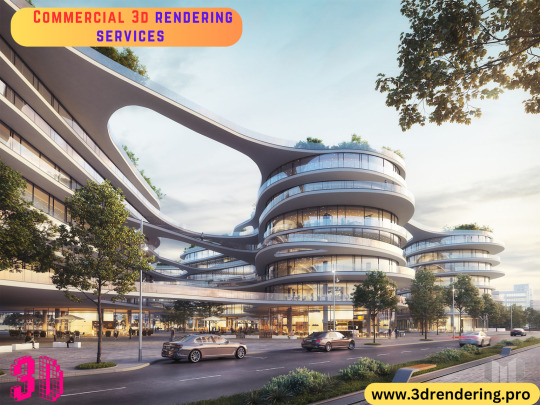
Enhanced Visualization and Presentation
3D commercial renders provide a realistic and detailed visualization of your projects. Unlike traditional 2D blueprints or sketches, 3D renders allow clients to see the finished product from multiple angles and perspectives. This level of detail helps clients better understand the project, leading to increased trust and approval rates. When you integrate 3D commercial rendering into your presentations, you can showcase your projects in a way that is both visually appealing and highly informative.
Improved Client Engagement
Using 3D commercial rendering in your marketing materials can significantly improve client engagement. High-quality 3D visuals capture attention more effectively than static images or text descriptions. By incorporating animated walkthroughs or interactive 3D models into your presentations, you can create a more immersive experience for your clients. This interactive approach can make your marketing materials more memorable and persuasive.
Streamlined Communication
One of the primary challenges in marketing is communicating complex ideas clearly. 3D commercial rendering simplifies this process by providing a visual representation of your project. This helps bridge the gap between technical details and client understanding. When clients can see a realistic portrayal of the project, it reduces misunderstandings and aligns expectations, making the entire communication process smoother and more efficient.
Boosted Marketing Campaigns
Incorporating 3D commercial rendering into your marketing campaigns can set you apart from competitors. High-quality 3D renders can be used across various marketing channels, including social media, websites, brochures, and advertisements. These visuals can attract a larger audience and generate more interest in your projects. Additionally, 3D renders can enhance your digital marketing efforts by improving engagement metrics such as click-through rates and time spent on your website.
Versatile Application
3D commercial rendering is not limited to any specific industry. Whether you are in real estate, architecture, interior design, or any other sector, 3D rendering can be tailored to suit your needs. For example, in real estate, 3D renders can showcase property layouts and designs, helping potential buyers visualize their future homes. In architecture, detailed 3D models can highlight structural features and design elements. This versatility makes 3D rendering a valuable tool for any marketing strategy.
Cost-Effective and Time-Saving
While the initial investment in 3D commercial rendering services might seem high, the long-term benefits outweigh the costs. Creating physical models or prototypes can be expensive and time-consuming. 3D renders, on the other hand, can be created relatively quickly and at a lower cost. Additionally, any changes or updates to the design can be made easily, saving both time and money.
Conclusion
Integrating 3D commercial rendering into your marketing strategy offers numerous benefits, from enhanced visualization and improved client engagement to streamlined communication and boosted marketing campaigns. By leveraging the power of 3D commercial renders, you can present your projects in a more compelling and effective manner, ultimately driving better results for your business. Embrace this technology and watch your marketing strategy transform, giving you a competitive edge in the market.
#3d commercial renders#commercial rendering#3d commercial rendering#commercial 3d rendering services
0 notes
Text
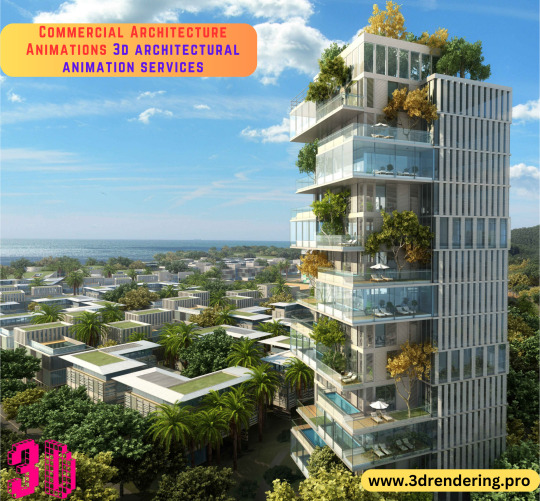
#commercial architecture animations#3d animation architecture design#3d architecture animation#architecture animation#animation architecture#3d architectural animation services#3d animation architecture
0 notes
Text
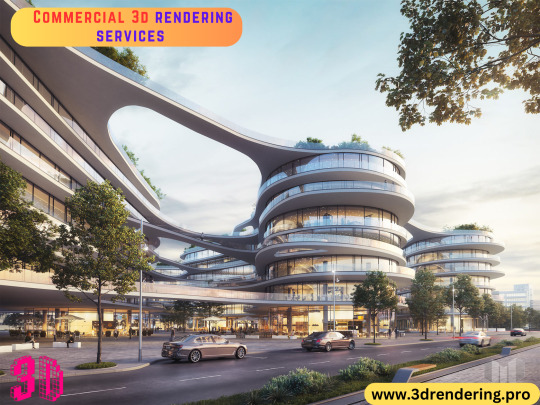
#3d commercial renders#commercial rendering#3d commercial rendering#commercial 3d rendering services
0 notes
Text
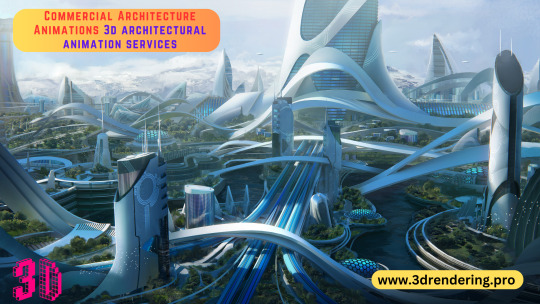
Are you in the realm of urban planning? Visualizing and communicating complex architectural designs and cityscapes is essential in this field. Traditional methods often fall short in conveying the grandeur and functionality of proposed developments. This is where 3D animation architecture design emerges as a transformative tool, revolutionizing how urban planners, architects, and stakeholders envision and shape the cities of tomorrow.
3D animation architecture design is not just a tool for visual representation; it is a catalyst for innovation in urban planning. By creating realistic and immersive visualizations, it transforms abstract concepts into tangible visions of future cities. As cities worldwide grapple with the challenges of population growth, environmental sustainability, and economic resilience, embracing advanced technologies like 3D animation architecture will be crucial in shaping a more connected, resilient, and livable urban landscape.
#commercial architecture animations#3d animation architecture design#3d architecture animation#architecture animation#animation architecture#3d architectural animation services#3d animation architecture
0 notes
Text
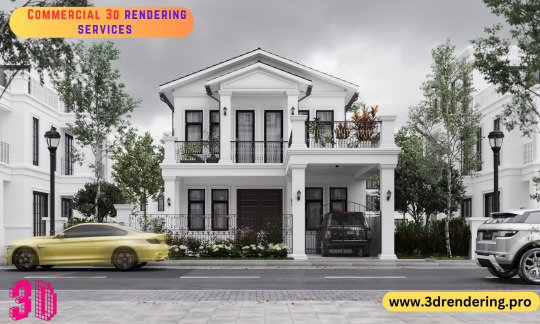
Are you looking to stand out in today's competitive real estate market? Traditional marketing techniques are no longer enough to capture the attention of potential buyers. That's where 3D commercial rendering services come in. By utilizing cutting-edge technology, 3D commercial renders can elevate real estate marketing to new heights, providing immersive and engaging visual experiences that help properties sell faster and at higher prices.
In conclusion, 3D commercial rendering services are transforming the real estate marketing landscape. By providing highly realistic and detailed visualizations, enhancing marketing materials, reducing time on the market, and offering cost-effective solutions, 3D commercial renders can significantly boost real estate sales and elevate marketing efforts. Embracing these advanced technologies will be essential for staying competitive and meeting the demands of modern buyers.
By leveraging the power of 3D commercial rendering, real estate professionals can create compelling marketing campaigns that captivate and inspire potential buyers, ultimately leading to more successful sales and satisfied clients. If you want to stay ahead in the real estate industry, consider incorporating 3D commercial rendering into your marketing strategy.
#3d commercial renders#commercial rendering#3d commercial rendering#commercial 3d rendering services
0 notes